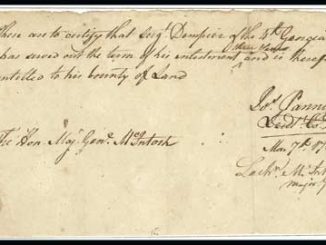
The Ohio Valley had long been a contested territory among French Canadians, various Indian groups and the British colonies of Pennsylvania and Virginia. When the French began to establish fortifications along the river and refused Virginia’s written demand that they depart, Virginia’s governor, Robert Dinwiddie, dispatched Washington to complete and defend a Virginian fort at the forks of the Ohio.
Widget not in any sidebars
Upon their arrival, Washington discovered that a scouting party led by Jumonville was nearby. Fearing that the French were planning an attack, Washington struck first, successfully ambushing the small party. In one of history’s murkier moments, Jumonville was murdered by Washington’s Indian ally, Tanaghrisson, while the monolingual Washington struggled to interrogate the French-speaking Canadian.
Jumonville’s murder in captivity incited a strong French response, and Washington was unable to defend his makeshift Fort Necessity from French forces led by Jumonville’s half-brother. Washington surrendered on July 4 and signed a confession—in French, which he could not read—to Jumonville’s assassination.
Benjamin Franklin had drafted his Albany Plan for Union earlier that spring, in the hope that united colonies could better orchestrate their own defense and governance. Colonists voted down the proposal everywhere it was presented. After Washington displayed his incompetence on the Ohio, the British decided it was time to save their colonies from themselves and dispatched two regiments of Redcoats under General Edward Braddock to America. Braddock too suffered a humiliating defeat at the forks of the Ohio; it took the British and their colonists seven years of world war to redeem themselves. The Seven Years’ War would go on to strip the French of their American empire and test the bonds of the British empire in America.







Be the first to comment